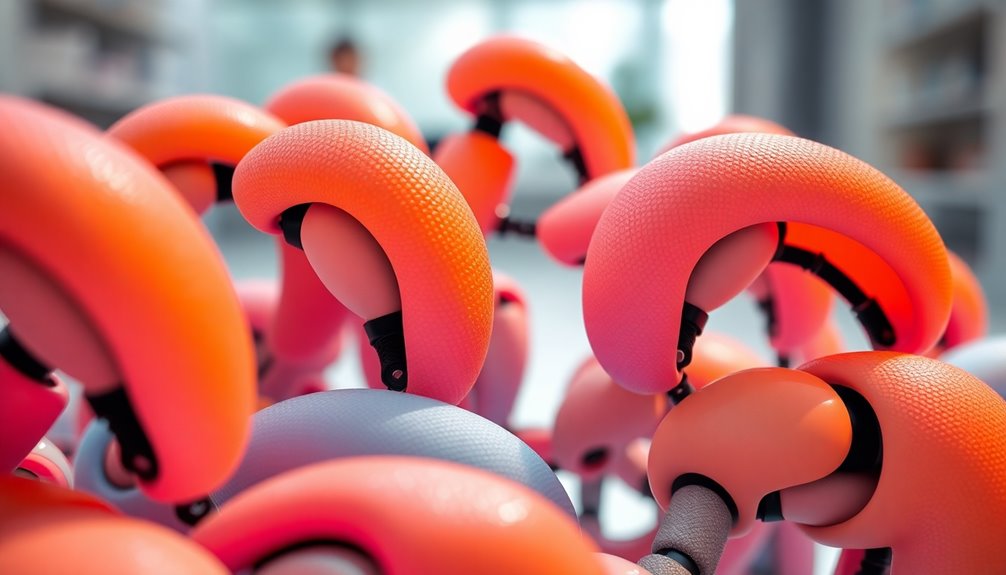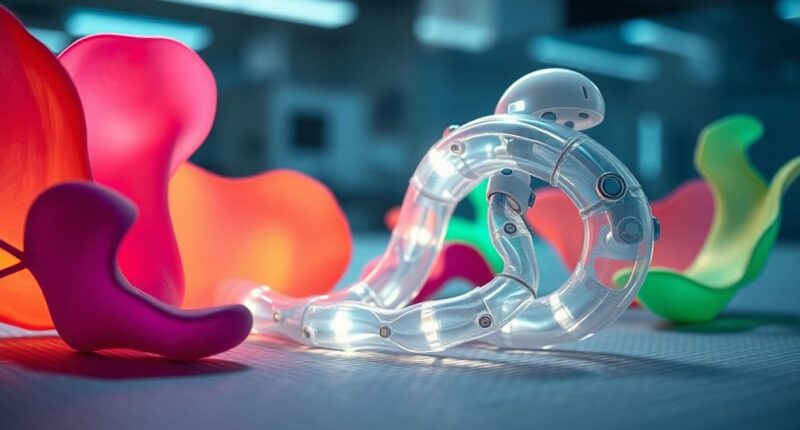You're witnessing a pivotal moment in modular robotics, where soft robots now harness 'embodied energy' for greater efficiency and functionality. This innovation allows robots to adapt seamlessly to various environments while minimizing weight. As these advancements unfold, the potential applications in fields like search and rescue and medicine become increasingly intriguing. What does this mean for the future of robotics? The answers might surprise you.

As you explore the world of robotics, you'll find that modular robotics powered by embodied energy is transforming how machines operate. This innovative approach integrates energy storage and power generation within the structural components of robots, enhancing their multifunctionality and efficiency. Inspired by nature, where living systems efficiently store and utilize energy, embodied energy is pushing the boundaries of robotic design.
When you consider the layout of these robots, it's fascinating to see how energy sources are embedded within their architecture. This clever design reduces weight while increasing energy density, allowing robots to operate longer and adapt better to diverse environments. Imagine modular worm and jellyfish robots, each designed to thrive in their unique settings due to this revolutionary energy concept. The Granulobot's ability to adapt to environments further exemplifies how modular designs can enhance functionality.
The technologies and materials that support embodied energy are equally impressive. You'll encounter various energy storage systems, including electrical, mechanical, chemical, magnetic, and thermal methods. Advanced materials like electroactive polymers (EAPs) and structural batteries play a key role in enabling multifunctional energy storage and actuation.
With actuation mechanisms such as electric motors, hydraulic pistons, and electromagnetic dampers, these robots can perform a wide range of tasks effectively.
Soft robotics, a subfield that utilizes materials responsive to heat, light, or chemicals, benefits significantly from embodied energy principles. You'll see designs inspired by kirigami, which allow for flexible, electronics-free soft robots. This versatility opens doors to new applications, particularly in search and rescue, medical, and industrial contexts.
However, designing these sophisticated robots involves navigating complex challenges. The size, weight, and power (SWaP) tradeoffs are crucial for optimizing performance, and integrating multiple functions into a single component can reduce mass and improve energy density.
Yet, merging different systems increases complexity, complicating fabrication and servicing processes. Onboard energy harvesting mechanisms also become essential for replenishing energy sources, ensuring longevity in operation.
Looking ahead, you can expect exciting developments in modular robotics powered by embodied energy. Modular designs like the Granulobot promise adaptive and collective behavior, while ongoing research focuses on enhancing efficiency and functionality.
Innovations in magnetic actuation and non-rigid materials will likely expand the applications of embodied energy, paving the way for smarter robots ready to tackle tomorrow's challenges.









